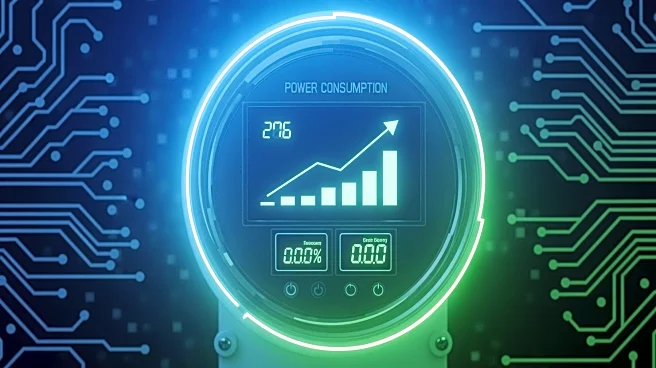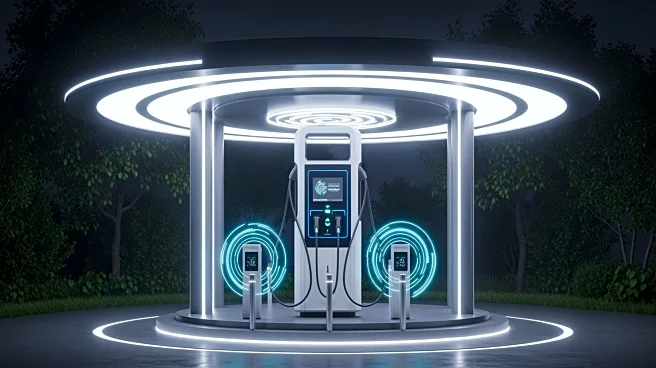What's Happening?
Electricity bills across the United States have increased significantly, with a nationwide rise of about 10% in 2025. This surge is notably higher in states like Georgia, New Jersey, and Virginia, where
bills have increased by 33%, 21%, and 13% respectively. The increase in utility costs is attributed to the growing demand for electricity, driven by the expansion of data centers supporting artificial intelligence technologies. Additionally, the retirement of old power plants and the need for new electric generation capacity have contributed to the rising costs. The price of natural gas, a key component in electricity generation, has also seen an increase, further impacting utility prices.
Why It's Important?
The rise in electricity bills is a significant issue affecting U.S. households, particularly those on fixed incomes, such as retirees. The increased costs have become a focal point in political campaigns, with Democrats advocating for energy affordability and renewable energy sources, while President Trump emphasizes fossil fuels. The demand for electricity is expected to continue growing, with implications for both residential and commercial sectors. Utilities are under pressure to expand capacity and improve grid resilience, which may lead to further cost increases. The situation highlights the need for strategic energy policy decisions to balance demand, affordability, and sustainability.
What's Next?
Utilities are planning to invest over a trillion dollars in the next five years to build new power supplies and enhance grid resilience. Regulators face the challenge of determining who will bear these costs, with potential implications for residential customers if data centers receive favorable rates. Strategies to reduce overall power bills include adjusting consumption patterns and encouraging data centers to use backup power during peak demand times. The ongoing political debate over energy policy and affordability is likely to intensify as stakeholders seek solutions to manage rising costs and demand.
Beyond the Headlines
The increase in electricity demand due to AI and data centers raises questions about the equitable distribution of energy costs. Residential customers typically pay higher rates than commercial users, which could lead to disparities if data centers are given preferential pricing. The situation underscores the importance of regulatory oversight to ensure fair pricing and the need for innovative solutions to manage peak demand. The transition to electric vehicles and appliances further complicates the energy landscape, requiring comprehensive policy approaches to address long-term sustainability and affordability.














